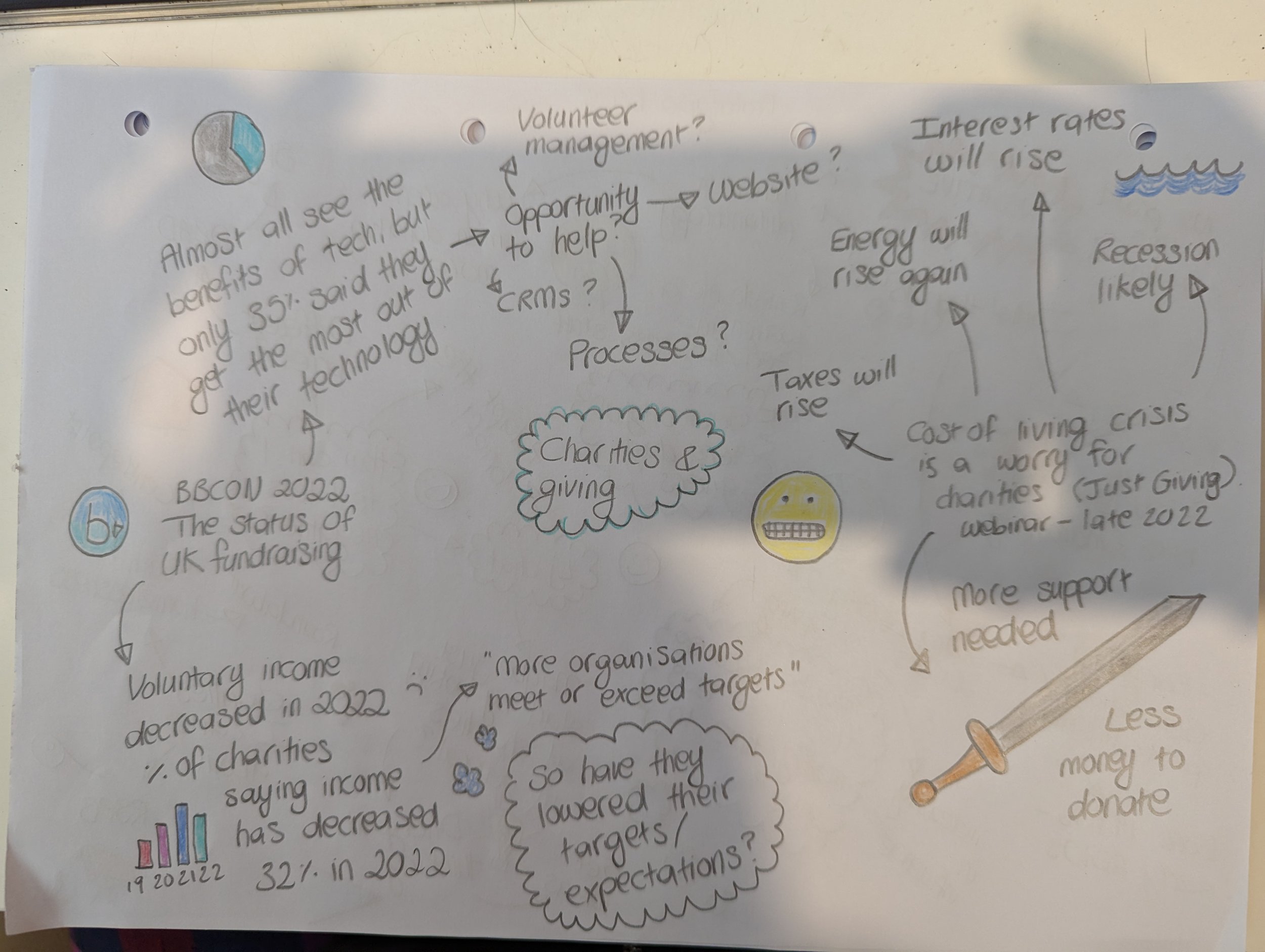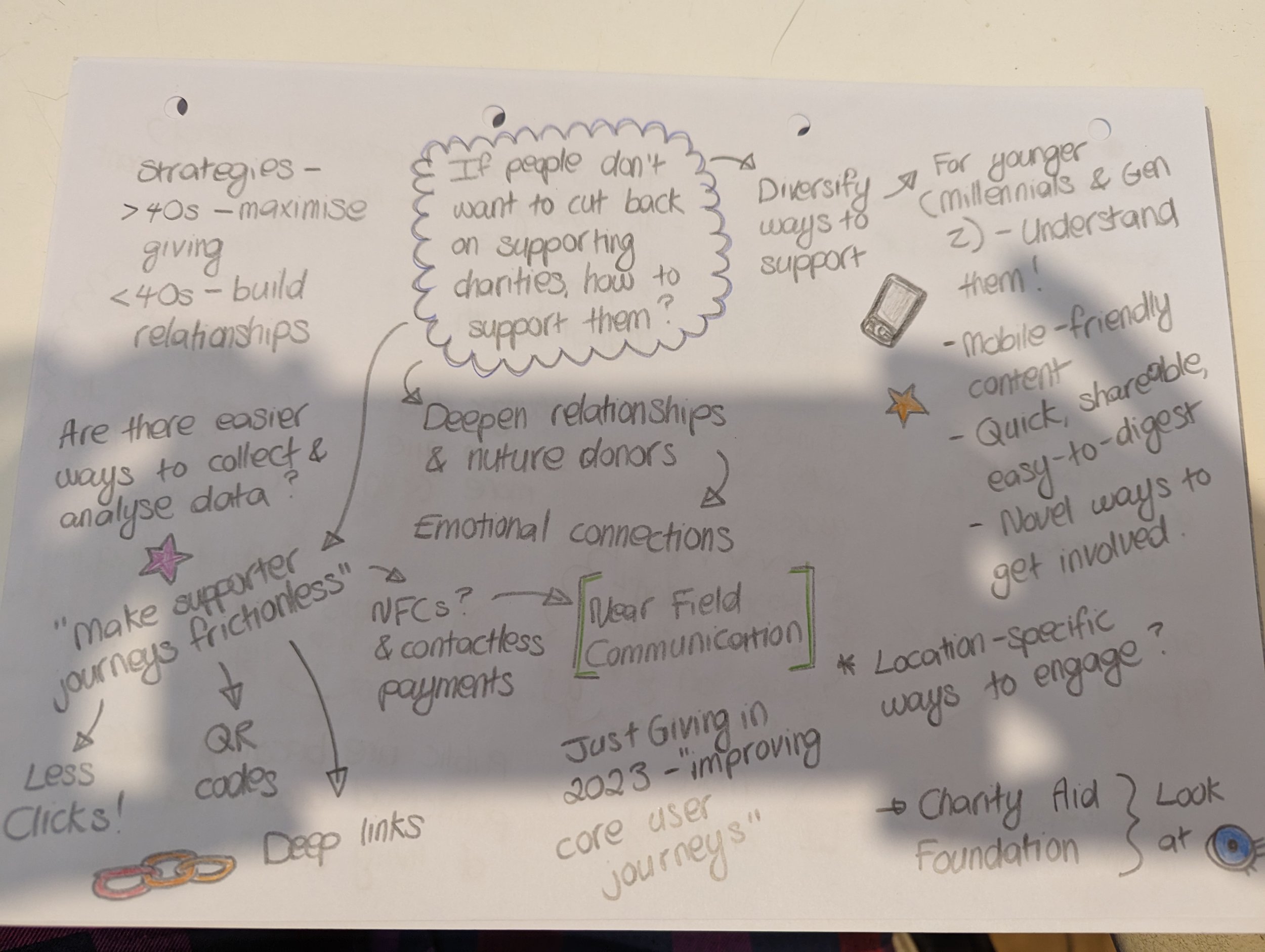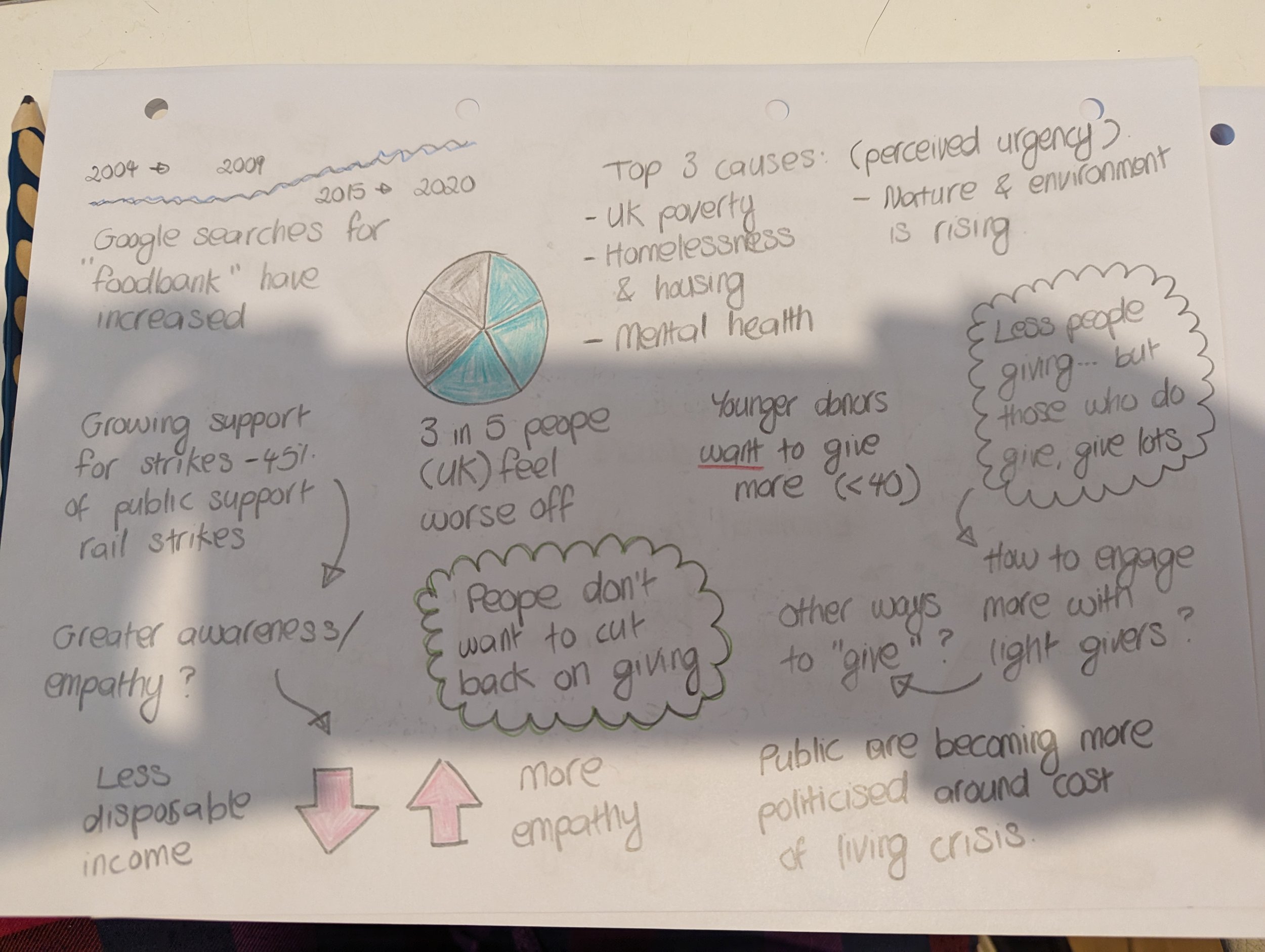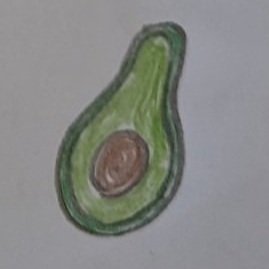Connections and discoveries
It didn’t take long for a representative from Roundabout to respond to my email. They were keen to chat and so was I! We arranged a Teams call so that we could learn about each other.
The call went really well and I felt so enthused afterwards that I had to dance around my kitchen! (Although that doesn’t take much to be honest)
Getting to know you
According to Baxter et al, at this point in my project, my “first objectives are to learn about the product (if it already exists), domain, and (target) users” (2015:24) so this is what I set out to do. I wanted to learn more about what Roundabout does, their “domain” as a youth homelessness charity, and any potential users whose needs I will need to consider when designing my prototype.
The primary research I’ve been doing by carrying out user research discussions is part of that but secondary research is important too. I want to take advantage of information that already exists out there and avoid duplicating work that has already been done by someone else (Baxter et al. 2015). When I spoke to the team at Roundabout, they signposted me towards some really helpful webinar recordings to watch:
The sketches below show the notes I made.
Key thoughts
The two webinars gave me a broad overview of the challenges that charities are facing right now, particularly in the aftermath of COVID-19 and in response to the cost of living crisis. I found the following points particularly interesting:
While 32% of the charities surveyed said that their income had decreased in 2022, many were still meeting or exceeding their funding expectations which suggests that perhaps charities are adjusting their plans and expectations so that they can survive the current economic situtation
If only 35% of charities felt they got the most out of technology, this could be an area where I could use my project to provide support
Improving supporter and “core user” journeys is another potential opportunity for me to provide support as it appears to be a focus for JustGiving and the third sector generally
I was surprised that homelessness and housing is one of the top causes in terms of perceived urgency and that there appears to be a high level of public support and empathy for this
(Blackbaud 2022),(GOOD Agency n.d.)
A diamond plan
There was a lot to look at, digest and make sense of after my first meeting with Roundabout so I needed a little time to do that before coming up with any plan or ideas. So, I did that and then used the double diamond approach (Ball 2019) as a framework to structure my project plan and communicate that plan to the Roundabout team.
One of the criticisms of the double diamond approach is that its apparent simplicity hides the more complex reality of creative and innovative design projects (Drew 2019), I do agree with this. The shape of the two diamonds “represent a process of exploring an issue more widely or deeply (divergent thinking) and then taking focused action (convergent thinking)” (Design Council 2019). As I wrote in a previous blog post, I found myself switching between divergent and convergent thinking within that overarching Discover stage.
However, it did prove to be a useful tool for me in two main ways:
Creating the plan
Communicating the plan
Creating the plan
Planning is not my strength. I really wish it was but it is not. I tend to get bogged down by the details of individual tasks and struggle to figure out how they all fit into the bigger picture. I then begin feeling overwhelmed and anxious about my ability to complete any of the tasks. The double diamond approach forced me to take a high-level approach to project planning and step away from the detail of individual tasks.
After creating the high-level plan using the double diamond as a structure, I created a weekly plan which was more detailed (please excuse the bare plaster). So far, I’m finding that having a paper plan on my wall, complete with colour-coded highlights and stickers, is much more helpful than a virtual Kanban board using Jira or Trello. However, this paper plan would not work as well for a group project.
Communicating the plan
I used the four Ds of the double diamond as broad themes to group project tasks and activities under. It made it easy for me to communicate what I was planning to do and why. I created a video to walk the Roundabout team through the double diamond plan and what I was planning to do at each stage.
Video communications
I would like to have arranged a call to explain my approach and plans. However, studying part-time around a full-time job and other commitments can make doing that during office hours tricky. So creating a video seemed like the next best option and it gave me an opportunity to try using Loom, a screen capture and video editing tool.
Part of the asssessment for this module includes creating a video to demonstrate the prototype I design and Loom is suggested as a way to do this. I wanted to have a play around with the tool before needing to use it properly for the assessment. I think the team at Roundabout appreciated receiving a little video too!
Reflections
Having spoken to Roundabout and decided on a project plan, here are my thoughts on how it all went.
What went well
The two webinars were really useful in helping me to learn about Roundabout’s “domain” (Baxter et al 2015:24) as a UK charity, operating in the current, post-COVID-19 climate.
Acknowledging that planning is a weakness for me and then leaning on the double diamond to help and strengthen this skill was a bit of a revelation. I can understand that it’s not a perfect model and agree with criticisms of it (Drew 2019), while also finding it really helpful in supporting my own processes.
My initial communications with Roundabout went really well too, from the initial email and call to the little video walkthrough of my plan. In particular, the success of the video surprised me. I created it with my own needs in mind but it felt quite personalised for Roundabout and the team really liked it.
What could be improved
Perhaps rather than continuing to gather information through secondary research, I should have started synthesising what I already have. I’ve found competing advice on this. In her article for Nielsen Norman Group, Anna Kaley (2023) recommends analysing research findings as you go to “avoid wasting time on end-of-discovery analysis paralysis”. However, Hamm warns against “the pressure to start designing as soon as possible” (2014:23). So it seems to me that I need to try and strike a balance between holding back and jumping in.
At the moment, I still don’t have a lot of information to analyse but I think it’s important to be mindful of the need to strike this balance, not just to avoid analysis paralysis but also to maintain momentum and prevent getting myself in a rut.
Future plans
I’m going to continue collecting information, through user research, over the next week. However, I am going to have a go at analysing and synthesising my findings as I go more so that there isn’t as much to do at the end of the discover stage.
-
BALL, Jonathan. 2019. ‘The Double Diamond: A Universally Accepted Depiction of the Design Process’. [online]. Available at: https://www.designcouncil.org.uk/our-work/news-opinion/double-diamond-universally-accepted-depiction-design-process/ [accessed 13 Feb 2023].
BAXTER, Kathy, Catherine COURAGE and Kelly CAINE. 2015. Understanding Your Users: A Practical Guide to User Research Methods. Second edition. Amsterdam Boston Heidelberg: Elsevier, MK, Morgan Kaufmann.
BLACKBAUD. 2022. BBCON 2022: The Status of UK Fundraising [Film]. Blackbaud Europe. Available at: https://www.youtube.com/watch?v=V9f8Onv8IFY [accessed 8 Feb 2023].
DESIGN COUNCIL. 2019. ‘Framework for Innovation: Design Council’s Evolved Double Diamond’. [online]. Available at: https://www.designcouncil.org.uk/our-work/skills-learning/tools-frameworks/framework-for-innovation-design-councils-evolved-double-diamond/ [accessed 25 Feb 2023].
DREW, Cat. 2019. ‘The Double Diamond: 15 Years On’. [online]. Available at: https://www.designcouncil.org.uk/our-work/news-opinion/double-diamond-15-years/ [accessed 15 Feb 2023].
GOOD AGENCY. n.d. The Cost of Living Crisis and how to build a resilient fundraising strategy [Film]. Available at: https://www.youtube.com/watch?v=kPdujh4cw7s [accessed 24 Feb 2023].
HAMM, Matthew J. 2014. Wireframing Essentials: An Introduction to User Experience Design : Learn the Fundamentals of Designing the User Experience for Applications and Websites. Birmingham, England: Packt Publishing.
KALEY, Anna. 2023. ‘Discovery in Agile’. Nielsen Norman Group [online]. Available at: https://www.nngroup.com/articles/discovery-in-agile/ [accessed 26 Feb 2023].
Thank you for reading.










